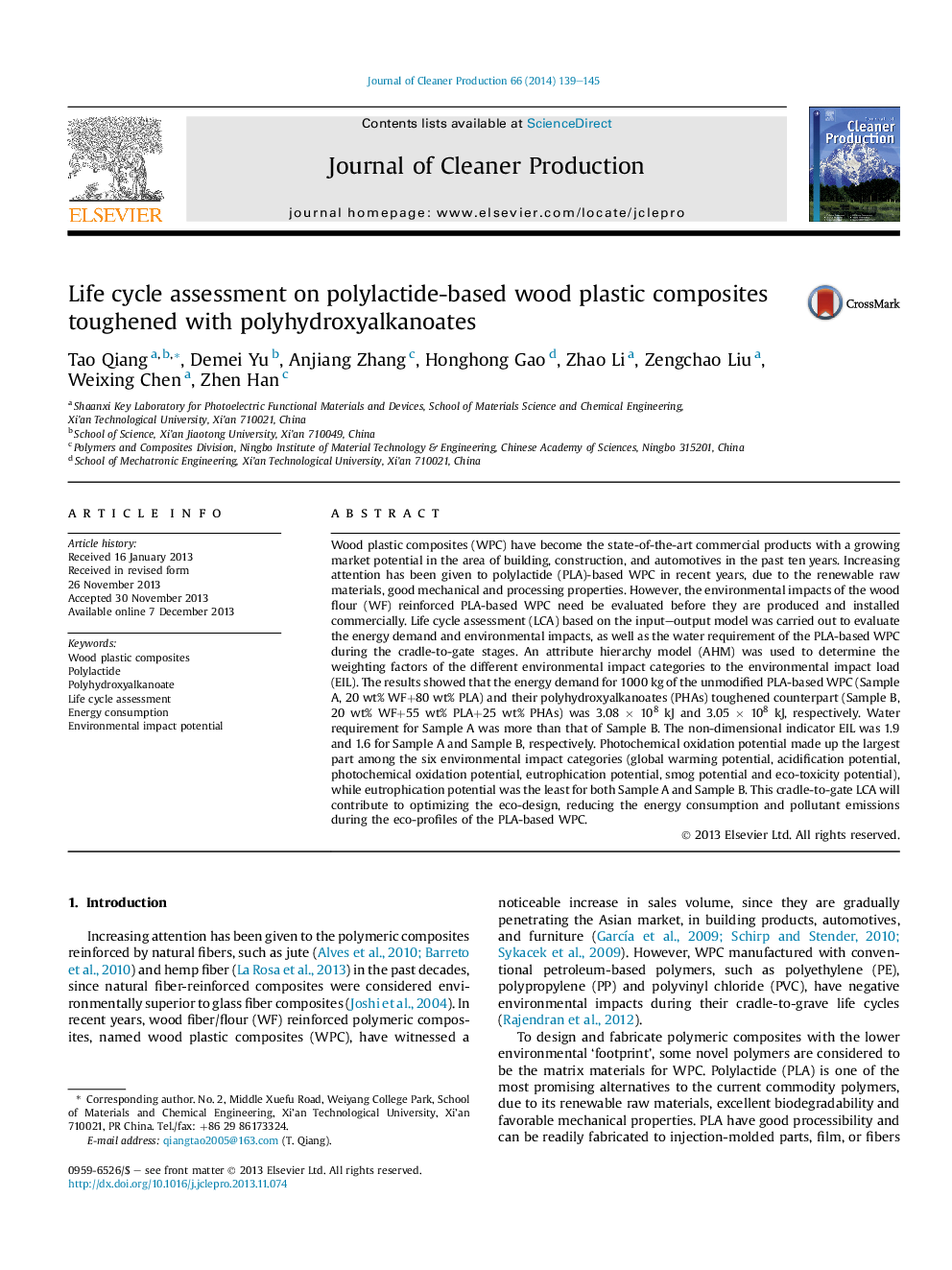| کد مقاله | کد نشریه | سال انتشار | مقاله انگلیسی | نسخه تمام متن |
|---|---|---|---|---|
| 1744983 | 1522180 | 2014 | 7 صفحه PDF | دانلود رایگان |

Wood plastic composites (WPC) have become the state-of-the-art commercial products with a growing market potential in the area of building, construction, and automotives in the past ten years. Increasing attention has been given to polylactide (PLA)-based WPC in recent years, due to the renewable raw materials, good mechanical and processing properties. However, the environmental impacts of the wood flour (WF) reinforced PLA-based WPC need be evaluated before they are produced and installed commercially. Life cycle assessment (LCA) based on the input–output model was carried out to evaluate the energy demand and environmental impacts, as well as the water requirement of the PLA-based WPC during the cradle-to-gate stages. An attribute hierarchy model (AHM) was used to determine the weighting factors of the different environmental impact categories to the environmental impact load (EIL). The results showed that the energy demand for 1000 kg of the unmodified PLA-based WPC (Sample A, 20 wt% WF+80 wt% PLA) and their polyhydroxyalkanoates (PHAs) toughened counterpart (Sample B, 20 wt% WF+55 wt% PLA+25 wt% PHAs) was 3.08 × 108 kJ and 3.05 × 108 kJ, respectively. Water requirement for Sample A was more than that of Sample B. The non-dimensional indicator EIL was 1.9 and 1.6 for Sample A and Sample B, respectively. Photochemical oxidation potential made up the largest part among the six environmental impact categories (global warming potential, acidification potential, photochemical oxidation potential, eutrophication potential, smog potential and eco-toxicity potential), while eutrophication potential was the least for both Sample A and Sample B. This cradle-to-gate LCA will contribute to optimizing the eco-design, reducing the energy consumption and pollutant emissions during the eco-profiles of the PLA-based WPC.
Journal: Journal of Cleaner Production - Volume 66, 1 March 2014, Pages 139–145